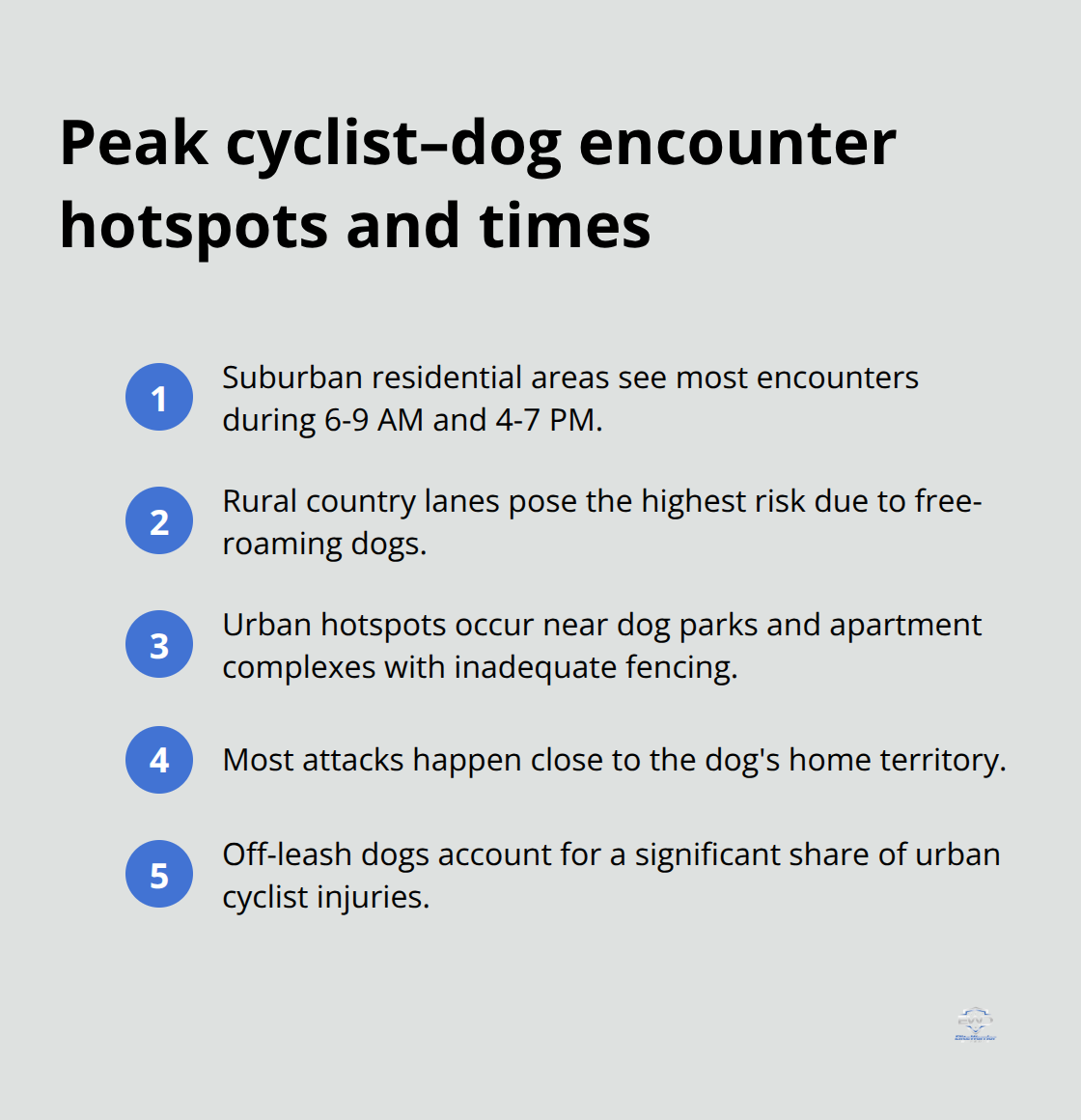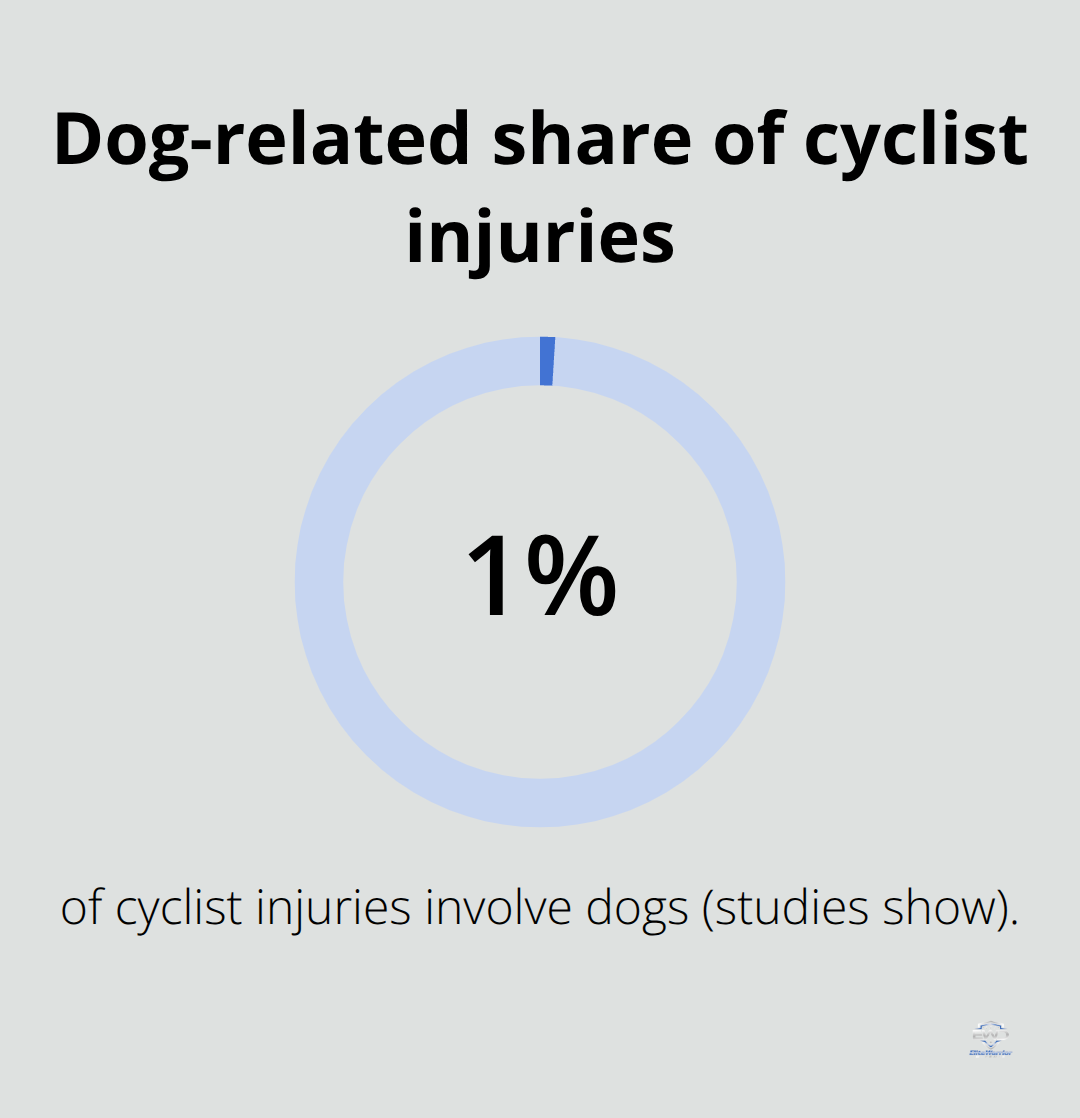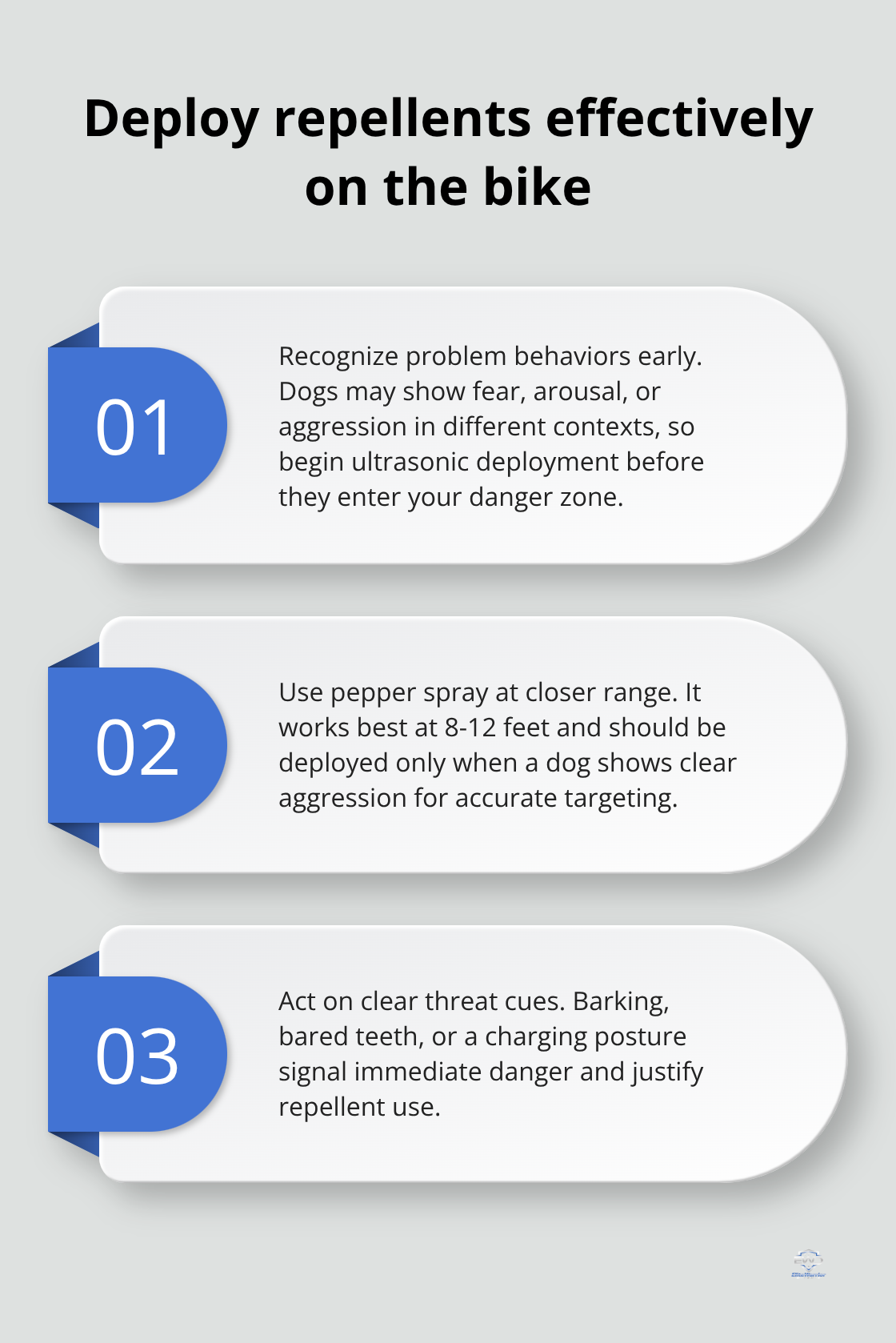Elite Warrior Defense
free shipping on orders over $25
We're having a 15% off sale on all our products. Enter your email below to be notified about future sales.

Cycling should be peaceful, but aggressive dogs can turn any ride into a dangerous situation. Nearly 4.5 million Americans suffer dog bites annually, with cyclists facing unique risks due to their speed and vulnerability.
We at Elite Warrior Defense LLC understand that finding the best dog repellent for cyclists means the difference between a safe ride and a potential emergency room visit. The right deterrent gives you confidence and protection when facing territorial or aggressive dogs on your route.
Dogs attack cyclists for specific behavioral reasons that stem from their natural instincts. Movement triggers their prey drive, which makes cyclists prime targets compared to stationary pedestrians. The American Veterinary Medical Association reports that territorial behavior accounts for a significant portion of dog attacks on cyclists, while chase instinct drives incidents. Dogs perceive fast-moving objects as threats or prey, which explains why cyclists face more attacks than walkers according to recent veterinary behavior studies.
Most cyclist-dog encounters happen in suburban residential areas between 6-9 AM and 4-7 PM when dogs are most active outdoors. Rural roads present the highest risk, with many cyclist attacks occurring on country lanes where dogs roam freely. Urban areas see concentrated incidents near dog parks and apartment complexes with inadequate fencing (particularly those built before 2010).

Research shows that most attacks occur within close proximity of the dog’s home territory, while off-leash dogs cause a significant portion of urban cyclist injuries.
The numbers reveal a stark connection between cyclist speed and dog aggression. Cyclists traveling above 15 mph face more aggressive responses from dogs compared to slower riders. Dogs react more intensely to rapid movement, which activates their predatory instincts. Research shows that maintaining moderate speeds reduces aggressive encounters in residential areas. However, slower speeds aren’t always practical on busy roads where traffic safety becomes the priority.
Studies show that approximately 1% of cyclist injuries involve dogs, with many incidents resulting in bites. The CDC reports an average of 43 deaths per year from dog attacks during 2011-2021. Cyclists experience aggressive encounters at rates higher than pedestrians, with many riders reporting at least one threatening dog encounter. These statistics highlight why effective deterrents have become essential equipment rather than optional accessories.

The growing frequency of these incidents makes choosing the right dog repellent spray system a top priority for cyclist safety.
Modern cyclists need proven deterrents that work instantly when they face aggressive dogs. Ultrasonic devices lead the market with their effective range, and the Dog Dazer II has earned over 3,500 Amazon reviews for its reliability. These handheld units emit high-frequency sounds that dogs hear but humans cannot, which makes them perfect for cyclists who need non-confrontational protection. The Sound Defence K9 targets cyclists specifically and offers distance deterrence without the need to stop or slow down.
Ultrasonic repellers work through high-frequency sound waves that disrupt a dog’s focus without harm. The PetSafe Ultrasonic Remote Dog Trainer provides consistent results when cyclists use it properly, while the Frienda LED Ultrasonic Dog Repeller includes multiple modes for different situations. These devices emit sound waves in the 25,000–45,000 Hz range, which makes them an effective, non-harmful deterrent. Battery life matters for cyclists who ride frequently – most handheld devices operate for up to 60 days with average use. These devices fit easily in jersey pockets or attach to handlebars for quick access during encounters.
Pepper spray remains the most effective deterrent for serious threats, with proven results that work on contact. Cyclists need compact, wind-resistant formulas that deploy quickly without interference with bike control. Choose sprays with foam or gel consistency rather than fine mist, which prevents blowback at speed. Wind direction becomes less problematic with gel-based formulas, and most effective units feature safety locks to prevent accidental discharge. Lightweight canisters that clip to handlebars or fit in pockets give instant access when needed.
Citronella-based repellents provide a humane alternative but work best as preventive measures rather than emergency responses. These natural options excel in areas with known dog territories, where cyclists can apply them before encounters occur. Vinegar and essential oil combinations show effectiveness in consumer reports (though their range limitations make them less suitable for fast riders). Natural deterrents work well for cyclists who frequent specific routes with predictable dog encounters, but they lack the immediate power needed for surprise situations.
The effectiveness of any repellent depends heavily on proper technique and timing during actual encounters. Most effective products work from a distance of 12-15 feet, providing a safe deployment zone.
Timing determines everything when you deploy dog repellents while cycling. Deploy ultrasonic devices at 15-20 feet from an approaching dog to maximize effectiveness before the animal enters your danger zone. Dogs show specific problem behaviors categorized as fear, arousal, and aggression in different contexts, which makes early deployment essential for success. Pepper spray requires closer proximity but works best at 8-12 feet for accurate targeting. Wait until the dog shows clear aggressive behavior rather than mere curiosity – barking, bared teeth, or charging posture signal immediate threat levels that justify repellent use.

Single-handed operation keeps you stable while you use deterrents during encounters. Mount ultrasonic devices on handlebars for thumb activation, which allows both hands to remain on controls throughout the encounter. Pepper spray deployment demands practice to avoid lost bike control – use your non-dominant hand while you keep your dominant hand on the handlebars for steering. Cyclists benefit from practicing deployment techniques in safe environments before real encounters occur. Wind direction affects pepper spray accuracy, so aim slightly upwind to compensate for forward momentum and crosswinds during deployment.
Pepper spray regulations vary significantly between states and municipalities, with some areas that restrict canister size or require permits for possession. California limits pepper spray to 2.5 ounces, while New York requires purchasers to be 18 or older with specific restrictions on strength levels. Massachusetts prohibits pepper spray sales to minors and requires retail purchases rather than online orders. Ultrasonic devices face no legal restrictions in any US state (making them the safest choice for travelers who cross state lines). Check local ordinances before you carry any deterrent – college campuses often prohibit pepper spray entirely, while some cities restrict deployment within urban limits.
Regular practice sessions improve your response time when real encounters happen. Set up practice scenarios in empty parking lots where you can simulate dog approaches safely. Practice one-handed deployment while you maintain bike control at various speeds. Most cyclists need 3-5 practice sessions to develop muscle memory for smooth deterrent deployment. Time your practice runs to measure how quickly you can access and deploy your chosen repellent (effective deployment should take less than 2 seconds from recognition to activation).
The Dog Dazer II remains the best dog repellent for cyclists in 2025, with its 3,500+ positive reviews and 15-20 foot effective range. This ultrasonic device works across all states without legal restrictions. Gel-based pepper spray serves as backup protection for serious threats when you deploy it at 8-12 feet distance.
Smart habits reduce encounter risks more than any device alone. Avoid direct eye contact with aggressive dogs and maintain steady speeds through residential areas. Stay alert during peak hours from 6-9 AM and 4-7 PM when dogs show the most activity (and practice your deployment techniques regularly to build muscle memory).
Quick response determines success when aggressive dogs approach within that critical 2-second window. Cyclists who prepare properly and choose quality deterrents ride with complete confidence. We at Elite Warrior Defense LLC provide comprehensive self-defense solutions including pepper spray, stun guns, and tactical equipment for complete protection beyond your bike rides.